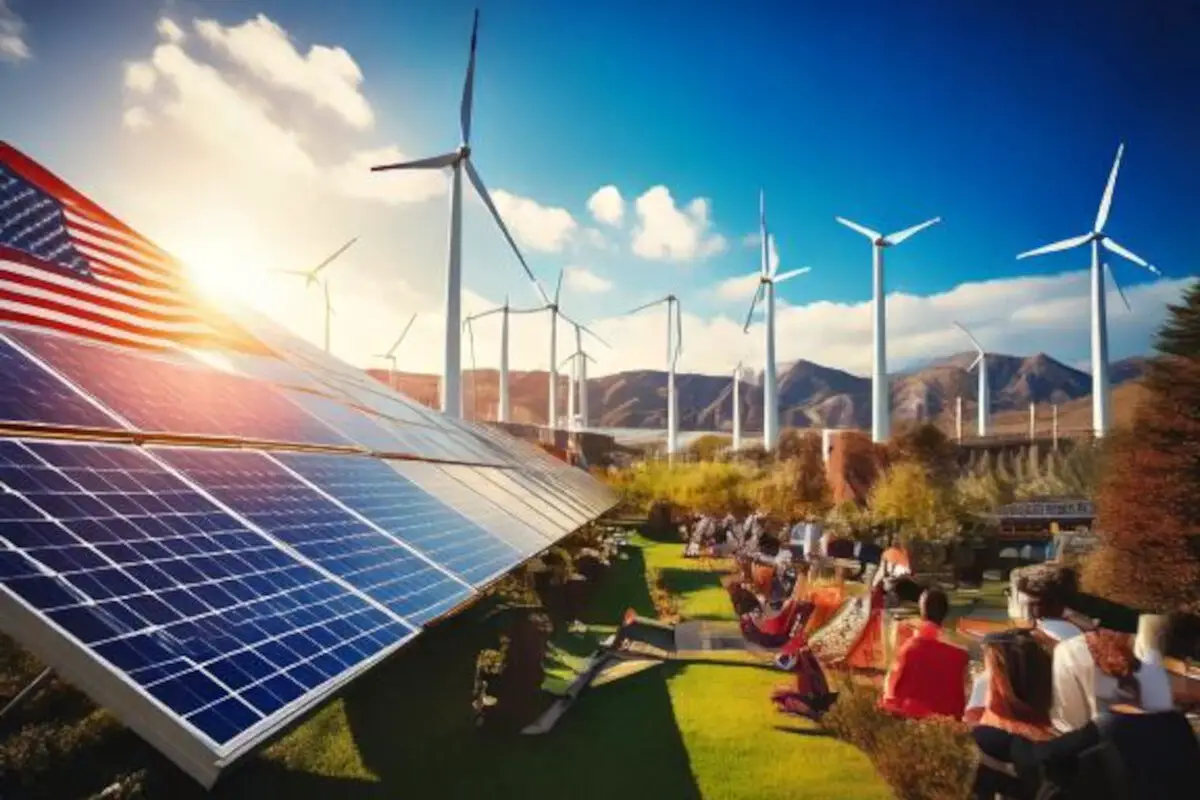Secretary Granholm outlines major investments and pledges, positioning the U.S. as a global leader in renewable energy and industrial decarbonization.
U.S. Takes the Lead with $95 Billion Clean Energy Commitment
At the 29th Conference of the Parties (COP29) in Baku, Azerbaijan, U.S. Secretary of Energy Jennifer Granholm spearheaded a delegation highlighting America’s progress in clean energy innovation and global climate commitments. The Department of Energy (DOE) underscored its $95 billion investment through the Bipartisan Infrastructure Law (BIL) and Inflation Reduction Act (IRA), aimed at reshaping domestic and international energy systems to combat climate change.
The landmark initiatives focus on scaling renewable energy, advancing clean hydrogen, promoting energy storage, and accelerating the decarbonization of industrial sectors. Secretary Granholm noted these steps are critical to achieving global climate goals, including limiting global temperature rise to 1.5°C.
Historic Global Pledges for Energy Storage and Hydrogen
The U.S. endorsed two significant pledges during COP29:
- Global Energy Storage and Grids Pledge: This initiative targets deploying 1,500 gigawatts of energy storage and modernizing 25 million kilometers of grids by 2030. Energy storage is essential for integrating renewable energy into power grids, converting intermittent sources like solar and wind into reliable electricity.
- COP29 Hydrogen Pledge: The U.S. committed to scaling up clean hydrogen production while addressing emissions from fossil-fuel-derived hydrogen. Hydrogen is vital for decarbonizing industries like steel and aviation, which are difficult to electrify.
These global efforts align with President Biden’s goal to triple renewable energy capacity by 2030 and achieve a net-zero economy by 2050.
U.S. Leadership in International Energy Security
The DOE also showcased its work in strengthening global energy security and innovation:
- Tripling Nuclear Energy by 2050: Endorsing nuclear energy as a critical component of decarbonization, six new countries joined the Tripling Nuclear Energy Declaration, which promotes investments and deployment strategies.
- Net Zero World Initiative: The U.S. collaborated with eight nations, implementing 20 decarbonization policies and projects. This includes training over 300 professionals in clean energy technologies and mobilizing billions in investments.
- Energy Workforce Training Centers: New facilities in Poland, Ghana, and the UAE will focus on nuclear energy workforce development, creating a skilled global labor pool for clean energy industries.
Investments Driving Innovation and Equity at Home
Domestically, the DOE has allocated $13.4 billion for 87 projects across 25 states, bolstering clean energy supply chains and manufacturing. The funding supports:
- Battery and Critical Materials: Projects in 11 states to develop recycling and processing capabilities for battery production.
- Hydrogen Hubs and Direct Air Capture: $7 billion dedicated to clean hydrogen infrastructure and $1.2 billion for carbon dioxide removal hubs.
- Equity-Focused Workforce Development: Local job training programs aimed at bridging employment gaps in underrepresented and disadvantaged communities.
Granholm emphasized, “Clean energy isn’t just about tackling climate change—it’s about creating jobs and ensuring every American benefits from this transition.”
Michigan’s Role in the Clean Energy Transition
Michigan stands to gain significantly from DOE’s initiatives, particularly through investments in manufacturing and grid modernization. Known as the heart of America’s automotive industry, Michigan is a key player in the transition to electric vehicles (EVs) and advanced battery production. In 2023, the state saw rapid growth in clean energy jobs, outpacing overall employment rates.
The DOE’s support for localized workforce programs and green manufacturing aligns with Michigan’s long-standing expertise in industrial innovation, positioning the state as a hub for next-generation clean energy solutions.
Related Developments: Global Energy Security and Decarbonization
COP29 also saw the U.S. co-leading efforts to improve energy sector transparency. Alongside the European Commission, the DOE is crafting a framework for monitoring and reducing greenhouse gas emissions from natural gas supply chains. These measures aim to incentivize cleaner practices in a sector that continues to be a major contributor to global emissions.
Find More Interesting Feature Stories From ThumbWind
- Michigan Features: Unveiling the people, places, and events that make the Great Lake State unique.
- Weird Political News: A sarcastic take on official news from government sources and PACs.
- Michigan News: News and events from Michigan’s Upper Thumb worth knowing.
Your Turn – Like This, or Hate it – We Want To Hear From You
Please offer an insightful and thoughtful comment. Idiotic, profane, or threatening comments are removed. Consider sharing this story. Follow us to have other feature stories fill up your Newsbreak feed from ThumbWind Publications.



